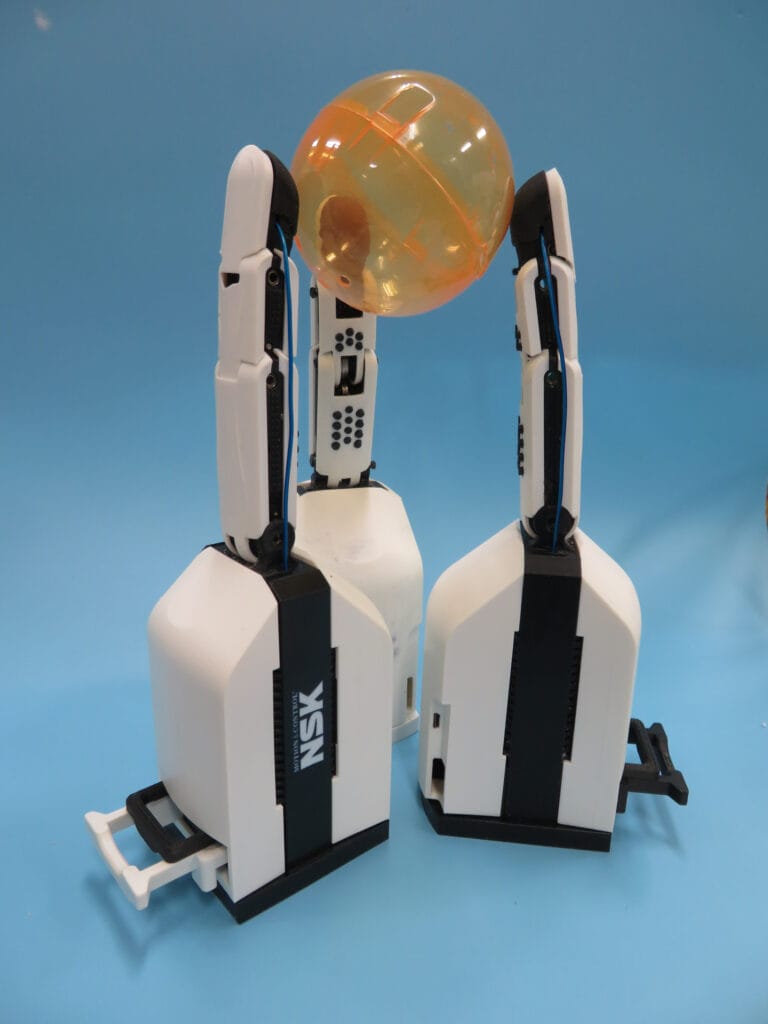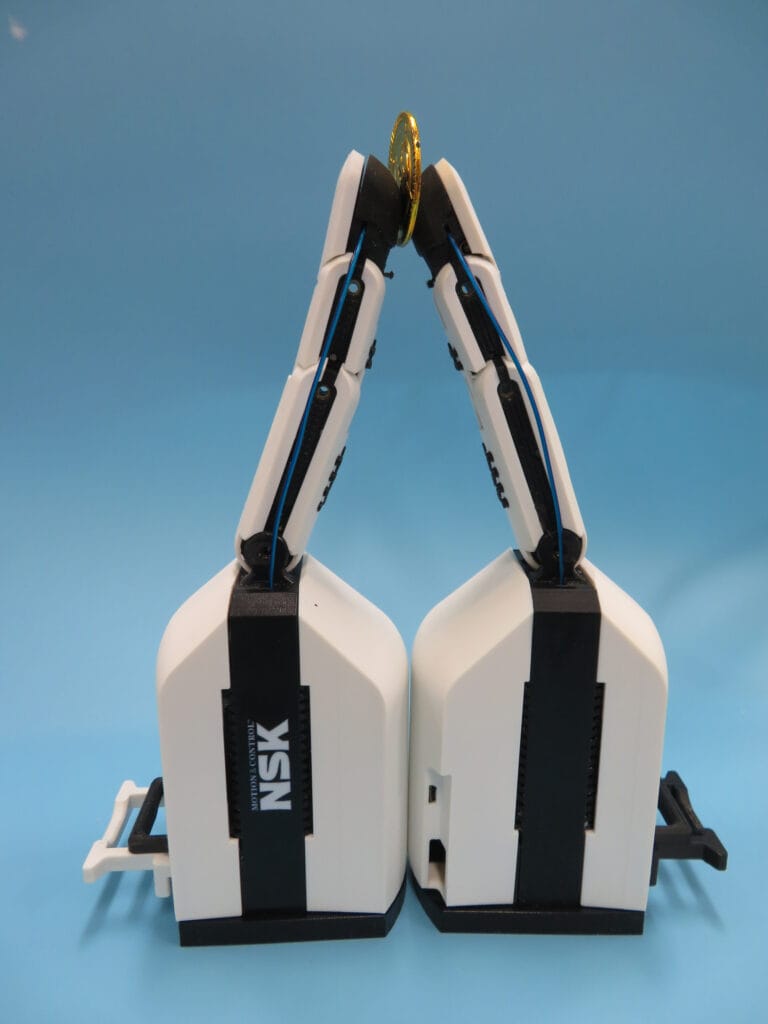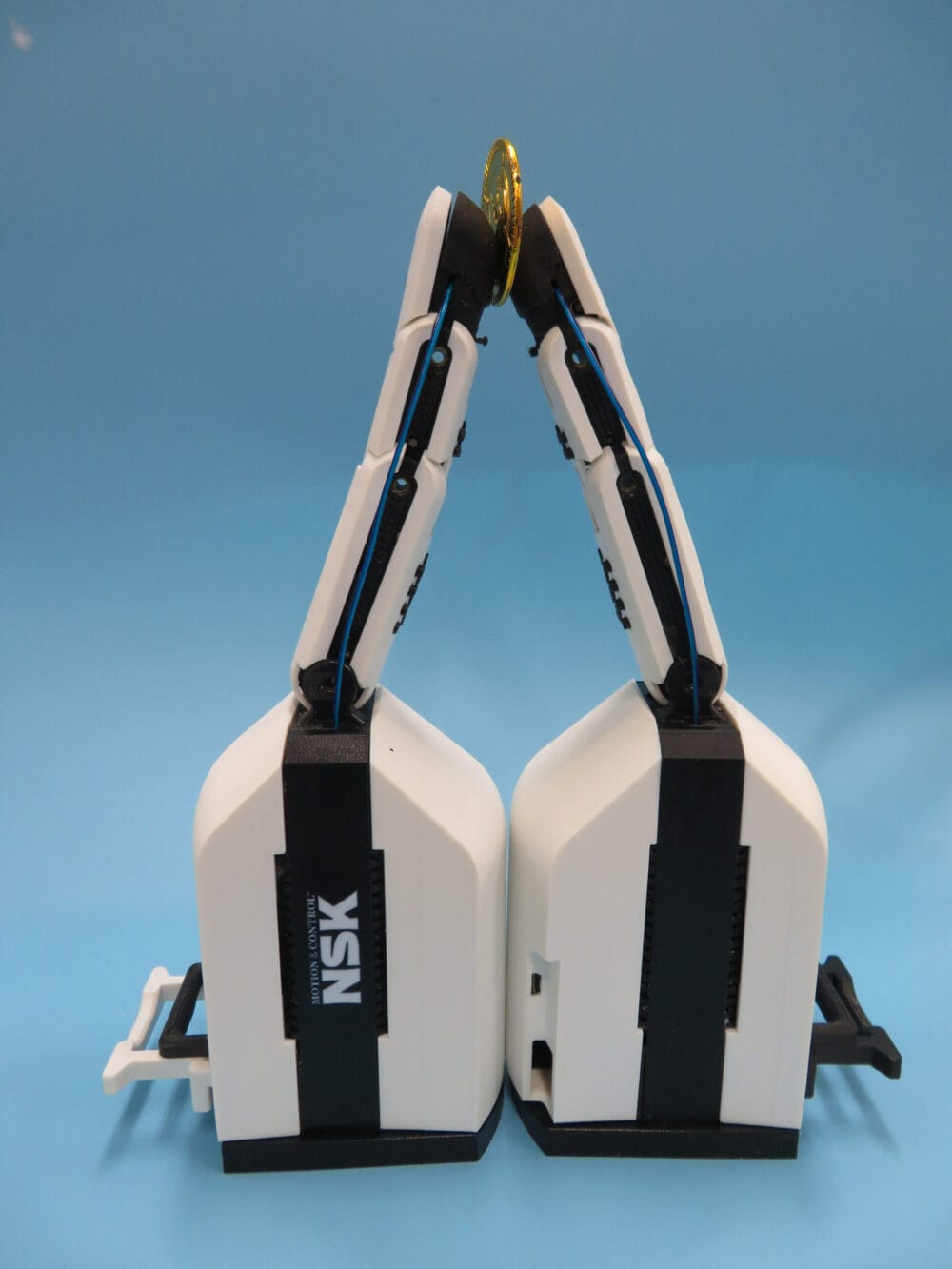NSK and the German Aerospace Centre are developing a robotic hand system that will help automate manual tasks, particularly in the service industry. The concept centres on a customisable robot hand comprising individually configurable finger modules, thought to be an industry-first. Through a combination of versatility and affordability, this innovative new product will contribute to the automation of manual work that involves grasping a broad variety of objects.
Many countries around the world, including several in Europe, are facing serious labour shortages across a number of important industries. Robots that can take on manual work represent a good way to overcome this increasingly prevalent situation. However, the introduction of robots has not progressed sufficiently in the retail, restaurant and some manufacturing sectors for tasks that require a high degree of dexterity. A significant factor here is price. While the price of robot hands that can grasp only a single type or size of object is low, robot hands that can grasp a diverse range of objects are extremely expensive.

Developed by NSK and the German Aerospace Centre, a trio of finger modules grasp a plastic ball
Against this backdrop, NSK and the German Aerospace Centre are working in tandem to develop a robotic hand system with finger modules that offer easy reconfiguration according to each use case. The individual finger modules enable the construction of robot hands with the minimum configuration required to meet customer needs: it is easy to create a robot hand that grips only standard products or a robot hand that grips a variety of objects.
Notably, by limiting production to individual finger modules, NSK aims to achieve a low unit cost through mass production. This should prove highly appealing to companies with target applications that require smooth finger movement, easy layout changes and optimised finger module placement.

Two finger modules, developed by NSK and the German Aerospace Centre, hold a metallic disc
The smooth motion and gentle gripping of diverse objects arrives through the wire drive technology of the German Aerospace Centre, while NSK’s proprietary detachable magnetic mechanism makes it quick and easy to alter the layout of finger modules simply by pulling a lever to attach or detach accordingly. In terms of finger module placement, NSK’s digital twin technology led to the development of an algorithm that optimises this task according to object size and shape.
To contribute to mechanisation and automation in a wide range of industries, including food service, retail, manufacturing, logistics and agriculture, NSK is now in the process of making solution proposals to robotic system integrators and customers with existing robot equipment. Field tests will commence imminently.








